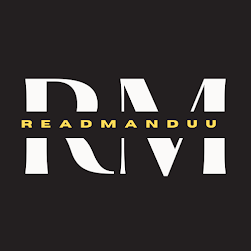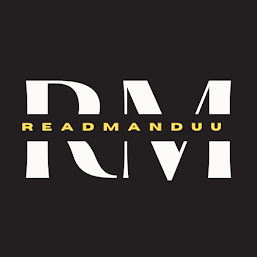A comprehensive resource for understanding Insure 90, its benefits, limitations, and future in the global insurance landscape.
Introduction
Insurance has transformed rapidly in recent decades due to digital innovation, emerging risk profiles, and changing consumer behaviors. Many policyholders no longer seek lengthy or complex insurance commitments. They demand flexibility, affordability, and customizable coverage structures that fit short-term needs. Insure 90 represents a prime example of this evolution. It provides concise, targeted protection structured around a ninety-day duration or activation cycle, depending on the product category.
This article presents a detailed examination of Insure 90 as a product model. It explains how Insure 90 works, its coverage potential, its target audience, and the reasons it reflects contemporary risk management expectations. Readers will gain the contextual understanding necessary to determine whether this type of insurance aligns with their personal or professional needs.
What is Insure 90
Insure 90 is a category of insurance product designed to deliver short-term protection, typically organized within a ninety-day timeframe. The ninety-day principle varies depending on provider design. For example, it may operate as:
-
A ninety-day coverage period
-
A ninety-day waiting period before benefit activation
-
A ninety-day renewable cycle structure
-
A ninety-day asset usage assessment for premium calculations
Insure 90 products can appear in multiple insurance sectors including health, automotive, travel, technology devices, and commercial assets. The central principle focuses on reducing long-term contractual obligations and creating greater accessibility to coverage that meets temporary or seasonal needs.
In short, Insure 90 offers insurance flexibility without sacrificing essential risk protection.
The Strategic Purpose of Insure 90
Traditional insurance plans typically require annual or multi-year commitments. This structure increases cost for individuals who do not require continuous year-round protection. Insure 90 aims to solve several strategic consumer pain points:
-
Short-term risk exposure
Consumers sometimes face risk only in limited durations such as travel seasons, contract work, or transitional life stages. -
Lower entry barriers
By pricing coverage in shorter cycles, insurers provide more affordable access to individuals with limited disposable income. -
Streamlined decision-making
Consumers benefit from a simplified offering rather than navigating large policy bundles.
Insure 90 functions particularly well within urbanized environments, gig-economy adaptations, and digitally empowered buyer segments who prefer subscription-like insurance utility.
Who Benefits Most from Insure 90
While Insure 90 can serve diverse populations, specific user profiles are especially compatible with its structural characteristics:
| User Category | Reason for Fit |
|---|---|
| Gig workers and freelancers | Irregular schedules, inconsistent exposure to risk |
| Students and seasonal travelers | Temporary duration in specific locations |
| Individuals with budget limitations | Lower upfront cost and optional renewals |
| Device-dependent workers | Coverage tailored to new technology risks |
| Start-up entrepreneurs | Short business cycles and operational testing periods |
For sectors where risk changes rapidly or time-bounded projects dominate operations, Insure 90 adds measurable financial protection without over-commitment.
Core Coverage Components of Insure 90
Coverage features differ by insurance provider and sector. However, the most common inclusions reflect core protections necessary for risk mitigation:
Health-Related Insure 90
-
Emergency medical care
-
Hospitalization coverage
-
Telehealth access
-
Outpatient treatments during the active coverage window
Auto or Vehicle Insure 90
-
Damage repair benefits
-
Liability for third-party injury or property harm
-
Breakdown emergency services
-
Short-term fleet protection for commercial use
Electronics and Asset Insure 90
-
Malfunction or accidental damage repair
-
Theft protection depending on underwriting
-
Rapid claim processing through digital diagnostics
Travel or Event-Specific Insure 90
-
Trip interruption benefits
-
Lost baggage coverage
-
Emergency evacuation services
Not all products include every benefit category. Policyholders must review inclusions carefully and ensure alignment between coverage and anticipated risk exposure.
Understanding the Ninety-Day Mechanism
The ninety-day mechanism sits at the heart of Insure 90 product design. Several structures can apply:
-
Ninety-Day Coverage Period
Coverage begins immediately upon purchase and lasts exactly ninety days. -
Ninety-Day Waiting Period
Claims activate only after the waiting period concludes to reduce fraud and high early-risk behavior. -
Ninety-Day Rolling Renewals
Policyholders renew every ninety days, effectively creating insurance on a subscription model. -
Ninety-Day Risk Evaluation Cycle
Premiums adjust based on real usage or incident frequency within the ninety-day timeframe.
Insurance providers adopt whichever structure best matches their underwriting strategy or regulatory requirements. Consumers must verify which model applies before enrolling.
Comparison with Traditional Annual Insurance Plans
Insure 90 introduces several notable distinctions when compared with standard long-term policies:
| Feature | Insure 90 | Traditional Insurance |
|---|---|---|
| Commitment Duration | Short, flexible | Annual or multi-year |
| Premium Cost | More affordable per coverage cycle | Higher upfront financial responsibility |
| Renewal Process | Fast digital renewals | Manual paperwork sometimes required |
| Customization | Typically modular | Broader but more rigid benefit bundles |
| Risk Focus | Time-sensitive or temporary | Long-term risk diversification |
| Provider Profit Strategy | High participant turnover | Long-term retention models |
Although Insure 90 provides flexibility and accessibility, traditional insurance still offers superior long-term value for risks that remain constant over the full year.
Pricing and Premium Variables
Premium structures vary widely depending on sector and underwriting policies. The following factors commonly influence Insure 90 pricing:
-
Policyholder age and health profile (for health coverage)
-
Vehicle type, mileage prediction, and driving history (for auto coverage)
-
Asset replacement value (for electronics and commercial assets)
-
Geographic region and claim risk probability
-
Deductible options selected during purchase
-
Historical claim behavior in prior cycles
Consumers benefit financially from careful evaluation of usage patterns. For instance, an individual who uses a personal device during only part of the year may significantly reduce costs by choosing Insure 90 rather than full-year protection.
Claims Process and Customer Experience
An exceptional claims experience is central to consumer satisfaction, particularly in short-duration plans. The Insure 90 model usually emphasizes streamlined digital support:
Typical Claim Workflow
-
Report the incident through a mobile app or portal
-
Upload required evidence such as photographs or incident forms
-
Receive digital expert validation or document review
-
Await approval within a specified turnaround duration
-
Obtain reimbursement or repair services
Due to shorter coverage duration, claims must typically be submitted promptly. Delayed submissions may result in rejection due to coverage expiration.
Common Claim Denial Reasons
-
Incident occurred outside the ninety-day coverage window
-
Pre-existing condition not disclosed
-
Fraud risk indicators
-
Exclusions explicitly mentioned in policy documentation
Proactive compliance with insurer guidance improves the likelihood of rapid claim approval.
Benefits and Competitive Advantages of Insure 90
Insure 90 delivers measurable advantages for both consumers and insurance providers:
Benefits for Policyholders
-
Cost Efficiency
Avoidance of paying for periods without risk exposure. -
Flexibility in Coverage
Ability to activate insurance only when necessary. -
Simplified Options
Clear and concise policy scope promotes informed purchasing. -
Immediate Protection
Some products provide coverage starting at enrollment.
Advantages for Insurers
-
Lower long-term liability
Reduced exposure to persistent high-risk behavior patterns. -
Market expansion
Ability to serve younger or underserved customer demographics. -
Digital operational efficiency
Automated underwriting and claims reduce costs.
As global demand continues to favor subscription-based financial products, Insure 90 aligns well with revenue predictability and customer experience expectations.
Limitations and Important Exclusions
No insurance product is universally beneficial. Consumers must consider potential drawbacks such as:
-
Narrower coverage scope
Insure 90 may not cover every risk that traditional plans include. -
Higher proportional premiums
In some cases, the short-term structure may produce higher costs per day when compared to annual plans. -
Limited renewal guarantees
Insurers may decline renewal if risk patterns elevate. -
Coverage gaps
Renewals require proactive action from the policyholder, increasing the chance of unintended uninsured periods.
Careful planning prevents exposure during transitions between coverage cycles.
Real-World Scenarios Where Insure 90 Excels
Illustrations help demonstrate practical use:
Scenario 1: Gig Ride-Hailing Driver
A rideshare driver operates only during seasonal tourist peaks. Insure 90 vehicle coverage protects from commercial liability during active months without year-round expense.
Scenario 2: Remote Student Abroad
An international student in a three-month program benefits from short-term medical coverage that directly corresponds with travel duration.
Scenario 3: Technology Freelancer
A drone operator performing temporary film projects protects equipment from damage during active projects only.
Scenario 4: Startup Launch Cycle
New businesses use Insure 90 commercial asset protection while validating product viability before committing to long-term operational insurance.
These scenarios highlight the financial efficiency and precision targeting of risk that Insure 90 enables.
Enrollment and Onboarding Process
Applying for Insure 90 is typically straightforward. The process often involves:
-
Submitting personal or asset details
-
Completing eligibility verification
-
Selecting coverage modules and deductible options
-
Reviewing regulatory disclosures
-
Completing digital payment and receiving documentation
Most providers operate entirely online. Policy documents, claim forms, and renewal notices are accessible through mobile applications for faster administration.
Regulatory and Compliance Considerations
Insure 90 is subject to jurisdictional insurance regulations. Policyholders must ensure that:
-
Providers are licensed by appropriate regulatory authorities
-
Policy terms conform to consumer protection laws
-
Claims handling follows fair settlement guidelines
-
Data privacy compliance is enforced during digital exchanges
Insurance regulators increasingly monitor short-term coverage products due to rapid market expansion and associated fraud vulnerabilities.
The Future of Insure 90
Insurance innovation continues to accelerate as advanced analytics, telematics, artificial intelligence, and real-time risk monitoring reshape product design. Insure 90 aligns with the following future trends:
-
Micro-insurance and pay-as-you-need models
-
Usage-based premium structures informed by behavior data
-
Expansion into climate-related and cyber risk markets
-
Integration into subscription ecosystems for digital services
Global demand for dynamic insurance packages will likely expand Insure 90 into more asset classes and personal risk categories. This positions it as a cornerstone of modern insurance adaptation.
How to Evaluate Whether Insure 90 Is the Right Choice
A structured decision framework helps determine suitability:
| Evaluation Criteria | Consideration |
|---|---|
| Coverage Duration | Do risk periods last fewer than three months? |
| Cost Efficiency | Is short-term coverage less expensive than annual insurance? |
| Continuity Needs | Can occasional uninsured periods be tolerated? |
| Risk Profile Stability | Is risk exposure variable or unpredictable? |
| Administrative Effort | Are frequent renewals acceptable? |
If the majority of answers align with short-term or variable coverage needs, Insure 90 provides a beneficial insurance solution.
Conclusion
Insure 90 stands as a compelling insurance format designed for a world that values flexibility, simplicity, and cost control. It supports risk management through a ninety-day cycle structure that fits modern lifestyles and evolving economic environments. Although not optimal for every consumer or business model, it offers significant value for temporary risk exposure periods and budget-constrained segments.
Prospective policyholders should evaluate their risk duration, financial objectives, and renewal convenience preferences before selecting Insure 90. When aligned correctly, Insure 90 delivers targeted protection, reduced financial burden, and a streamlined insurance experience that reflects the future of global insurance delivery.










0 Comments
If you have any doubts please let me know.